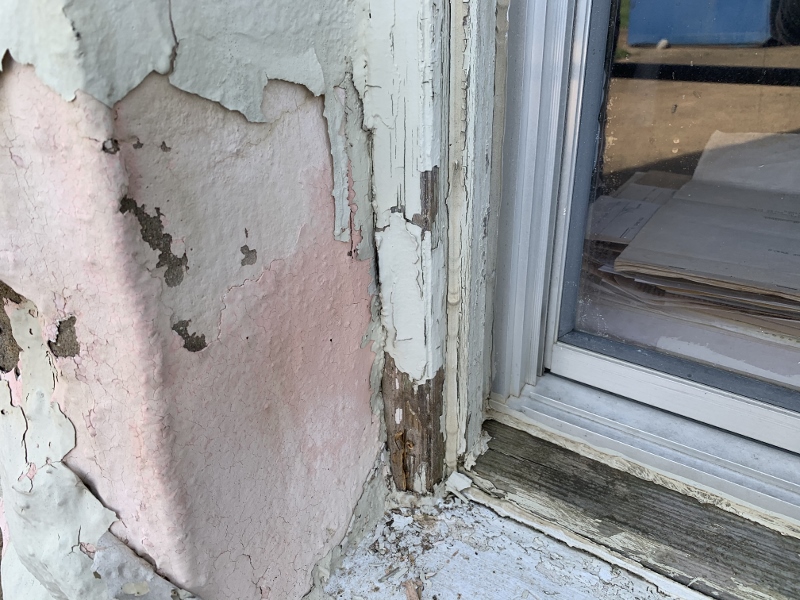What is Lead? Lead is a naturally occurring element found in small amounts in the earth’s crust. While it has some beneficial uses, it can be toxic to humans and animals, causing health issues.
Lead-Based Paint (LBP): Lead-based paints were banned for residential use in 1978. Homes and facilities built in the U.S. before 1978 are likely to have some lead-based paint. When the paint peels and cracks, it makes lead paint chips and dust. Any surface covered with lead-based paint where the paint may wear by rubbing or friction is likely to cause lead dust including windows, doors, floors, porches, stairways, and cabinets.
Lead in Water: Lead can enter drinking water when plumbing materials that contain lead corrode, especially where the water has high acidity or low mineral content that corrodes pipes and fixtures. The most common sources of lead in drinking water are lead pipes, faucets, and fixtures. In buildings with lead pipes that connect the building to the water main, also known as lead services lines, these pipes are typically the most significant source of lead in the water. Lead pipes are more likely to be found in older cities and buildings built before 1986. Among buildings without lead service lines, the most common problem is with brass or chrome-plated brass faucets and plumbing with lead solder.
 Health Effects of Lead: Lead-based paint and lead-contaminated dust are the most widespread and hazardous sources of lead exposure for young children in the United States. No safe level of lead exposure in children has been identified and there is no cure for lead poisoning. That is why preventing exposure to lead, especially among children, is important. Finding and removing sources of lead from the child’s environment is needed to prevent further exposure.
Health Effects of Lead: Lead-based paint and lead-contaminated dust are the most widespread and hazardous sources of lead exposure for young children in the United States. No safe level of lead exposure in children has been identified and there is no cure for lead poisoning. That is why preventing exposure to lead, especially among children, is important. Finding and removing sources of lead from the child’s environment is needed to prevent further exposure.
Exposure to lead can seriously harm a child’s health and cause well-documented adverse effects such as:
- Damage to the brain and nervous system
- Slowed growth and development
- Learning and behavior problems
- Hearing and speech problems
This can cause:
- Lower IQ
- Decreased ability to pay attention
- Underperformance in school
There is also evidence that childhood exposure to lead can cause long-term harm.
Testing for Lead and Abatement: If a building was constructed before 1978, then it most likely contains lead. A certified lead-based paint inspector or risk assessor, such as ERC, can conduct an inspection to determine whether the building or a portion of the building has lead-based paint and where it is located. This will tell you the areas where lead-safe work practices should be used for renovation, repair, or painting jobs. A certified risk assessor can conduct a risk assessment telling you whether the building currently has any lead hazards from lead in paint, dust, or soil.
If lead is located, the risk assessor will create an abatement plan to address any hazards. Lead abatement is an activity designed to permanently eliminate lead hazards. Abatement must be performed by a certified lead abatement firm due to specialized techniques not typical of most contractors.
For more information about lead, visit these sites:
Centers for Disease Control and Prevention (CDC)

